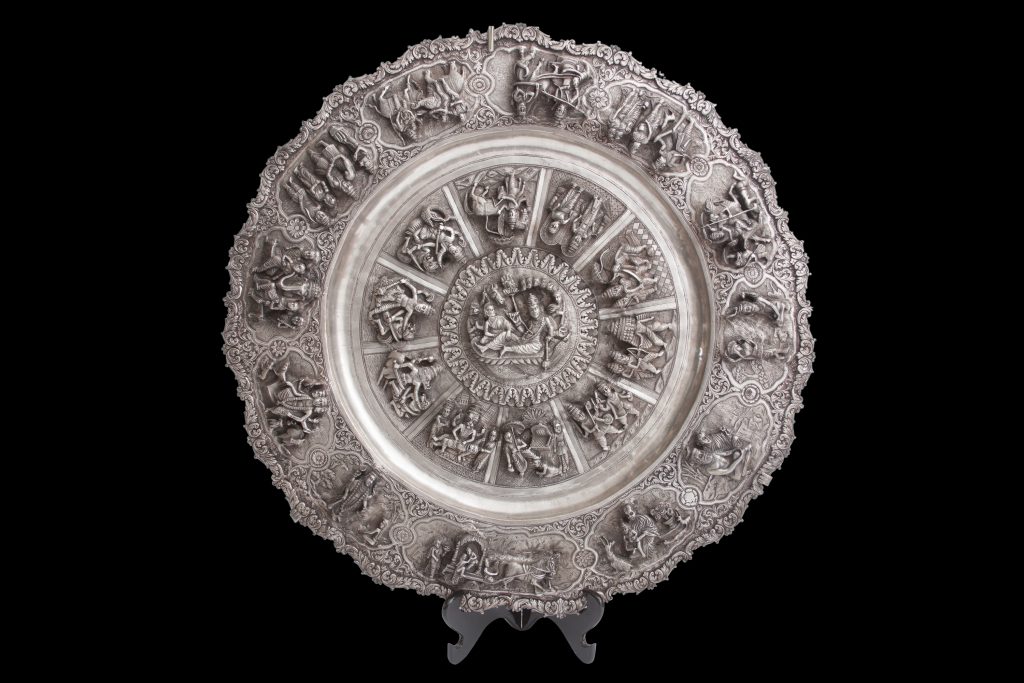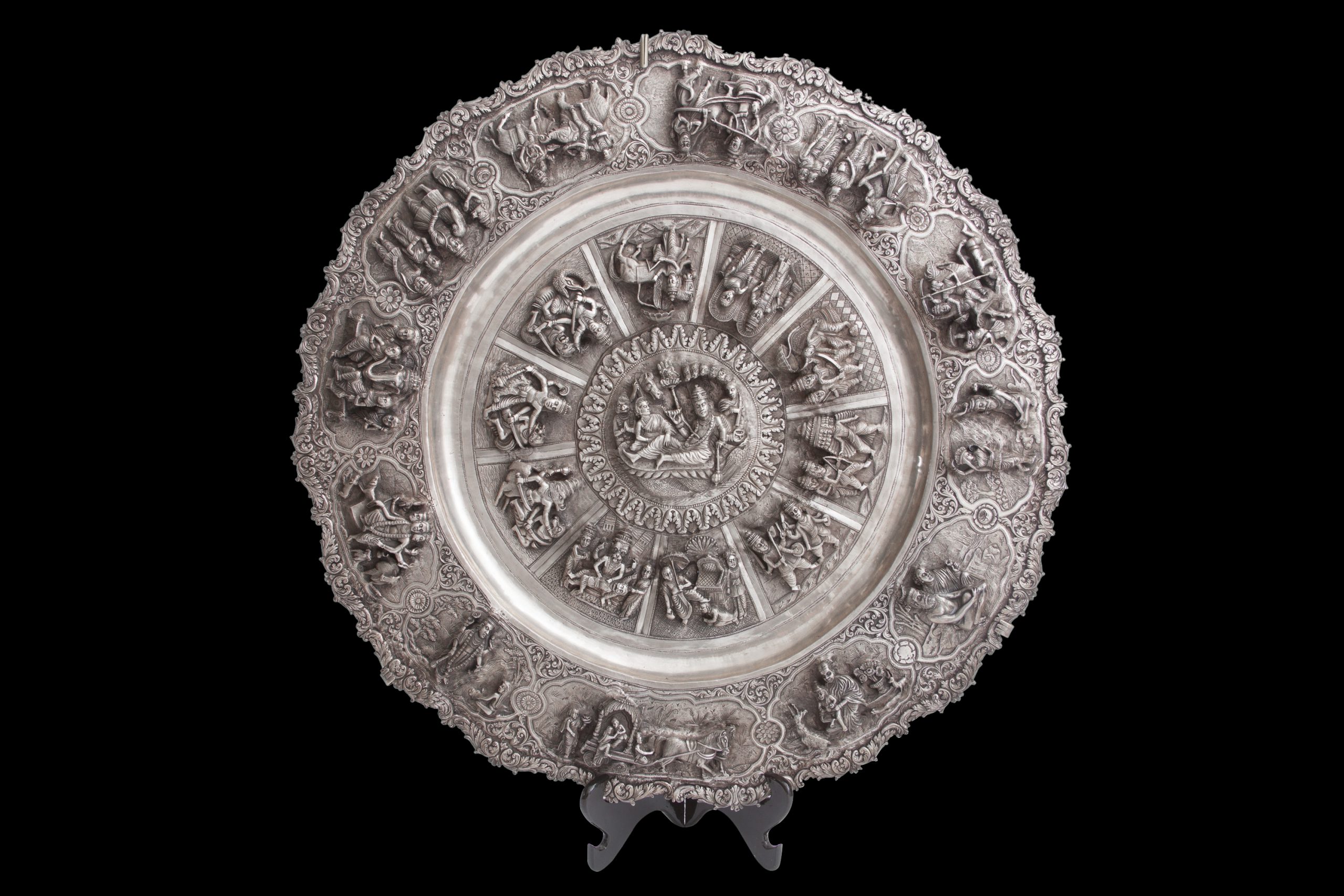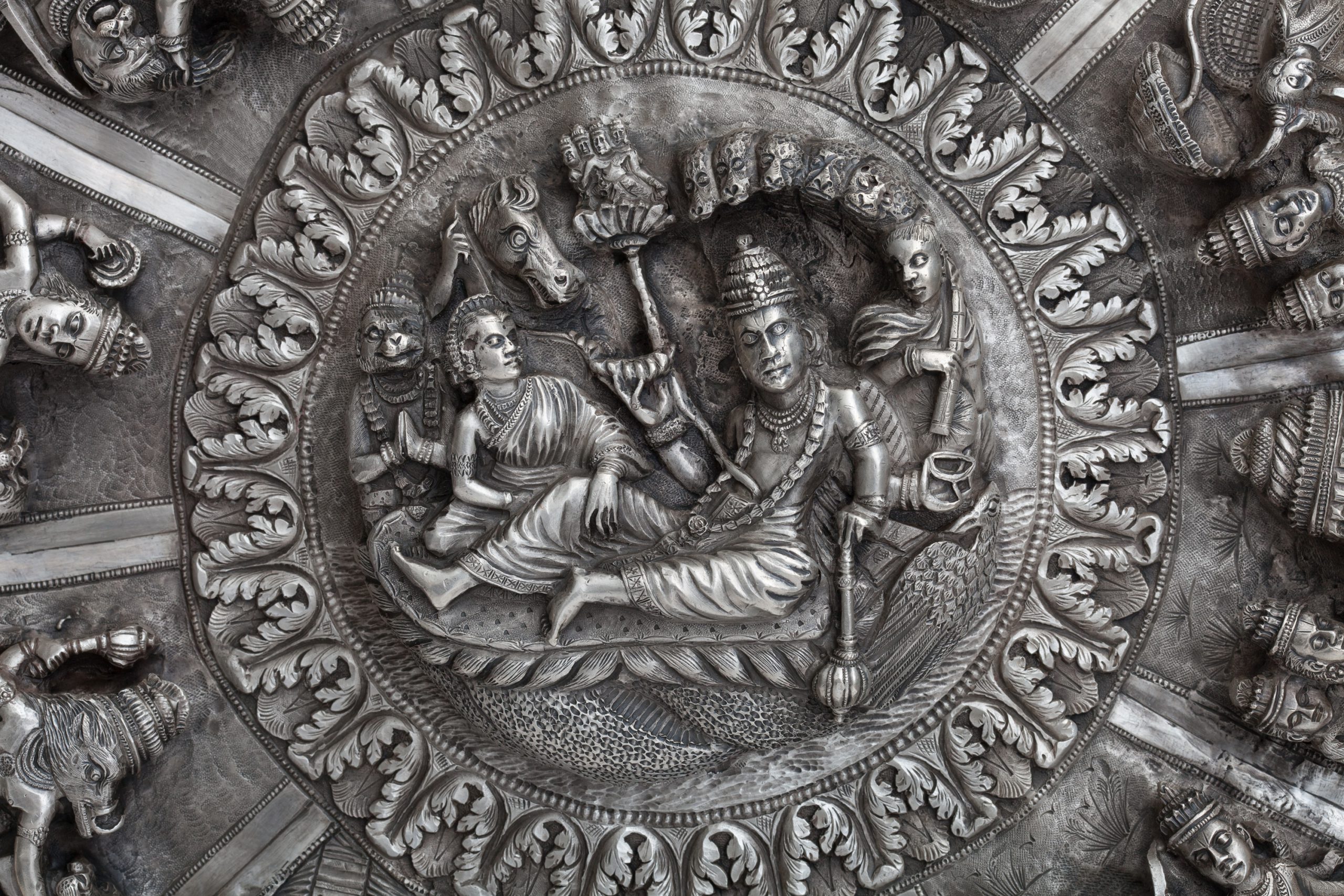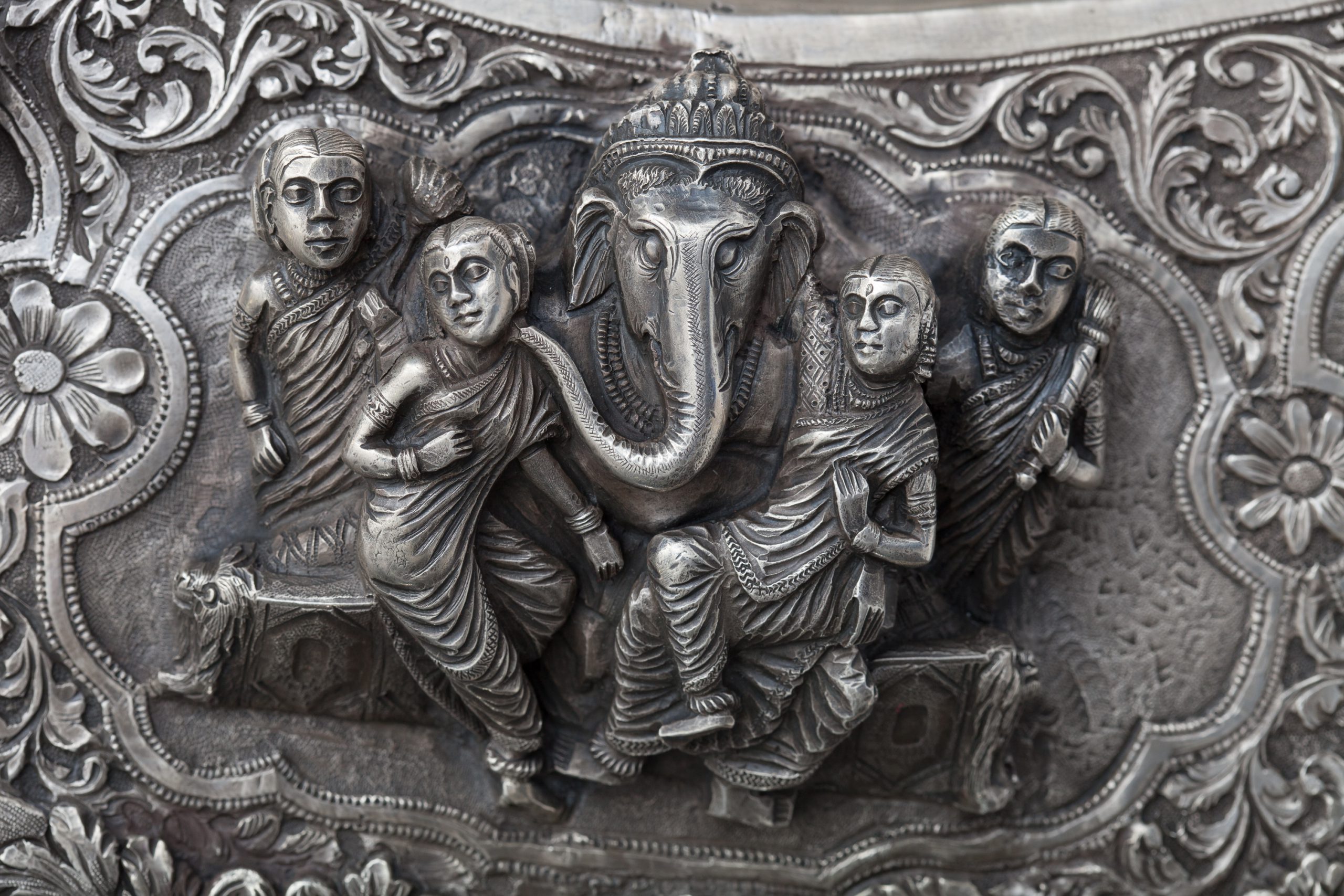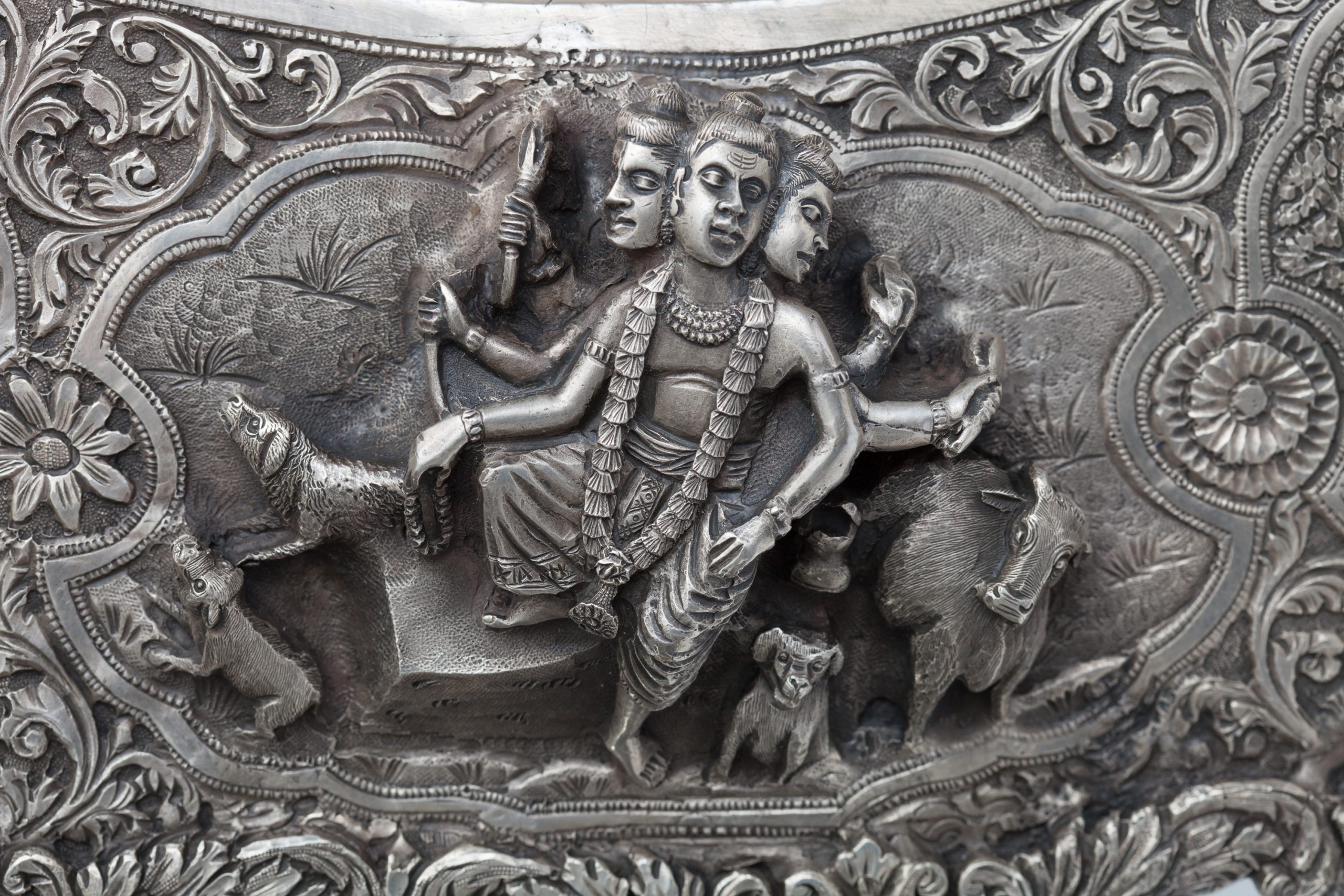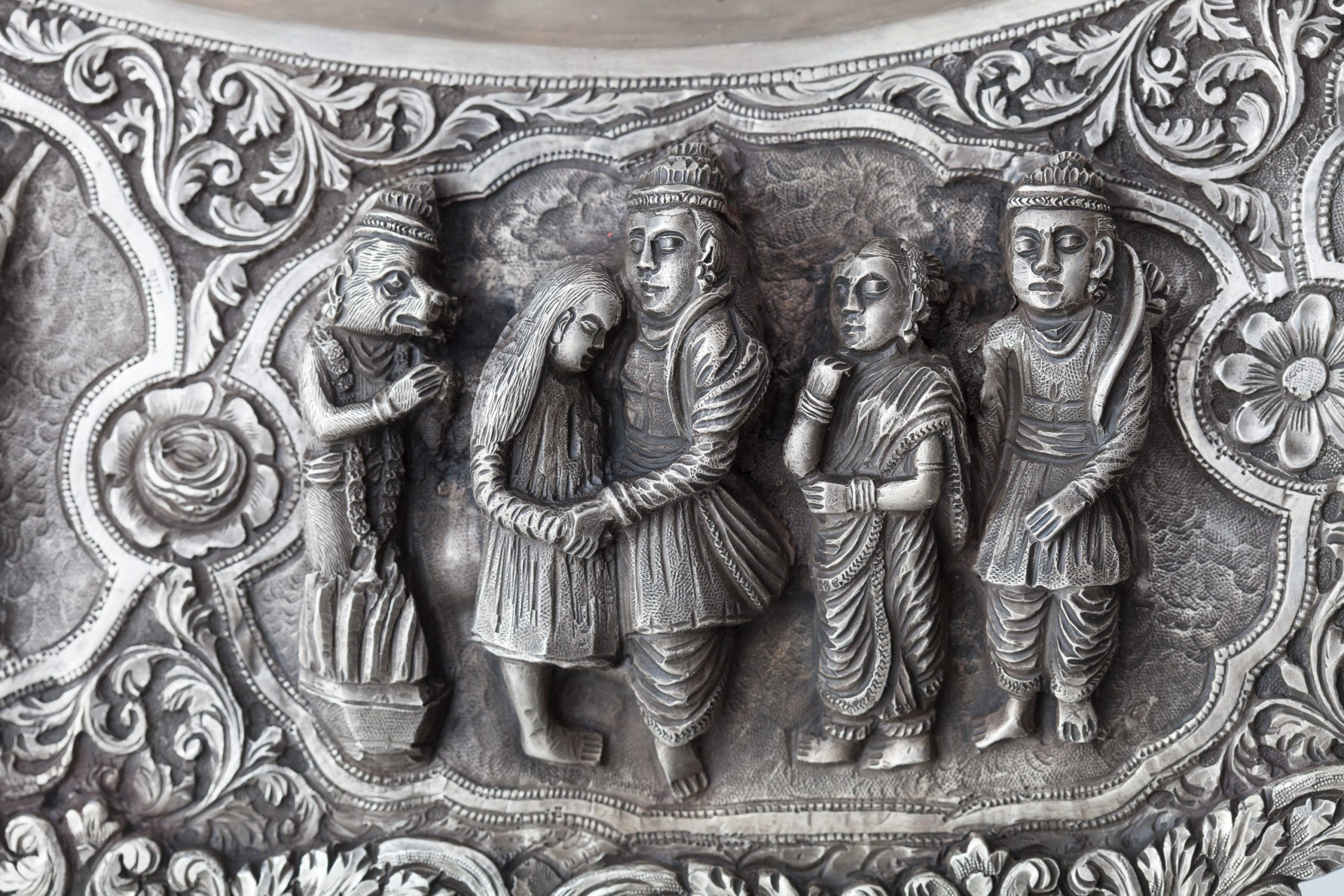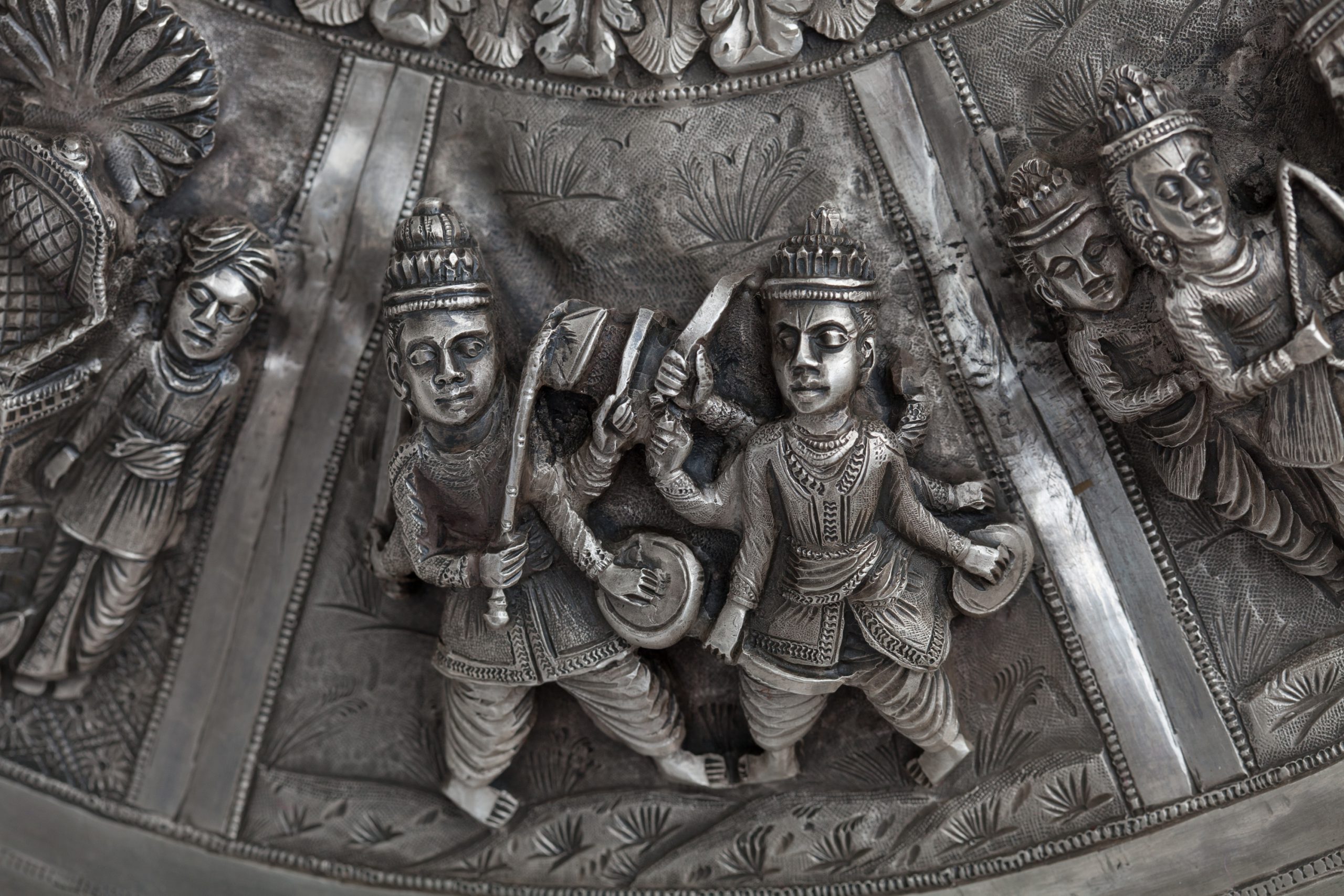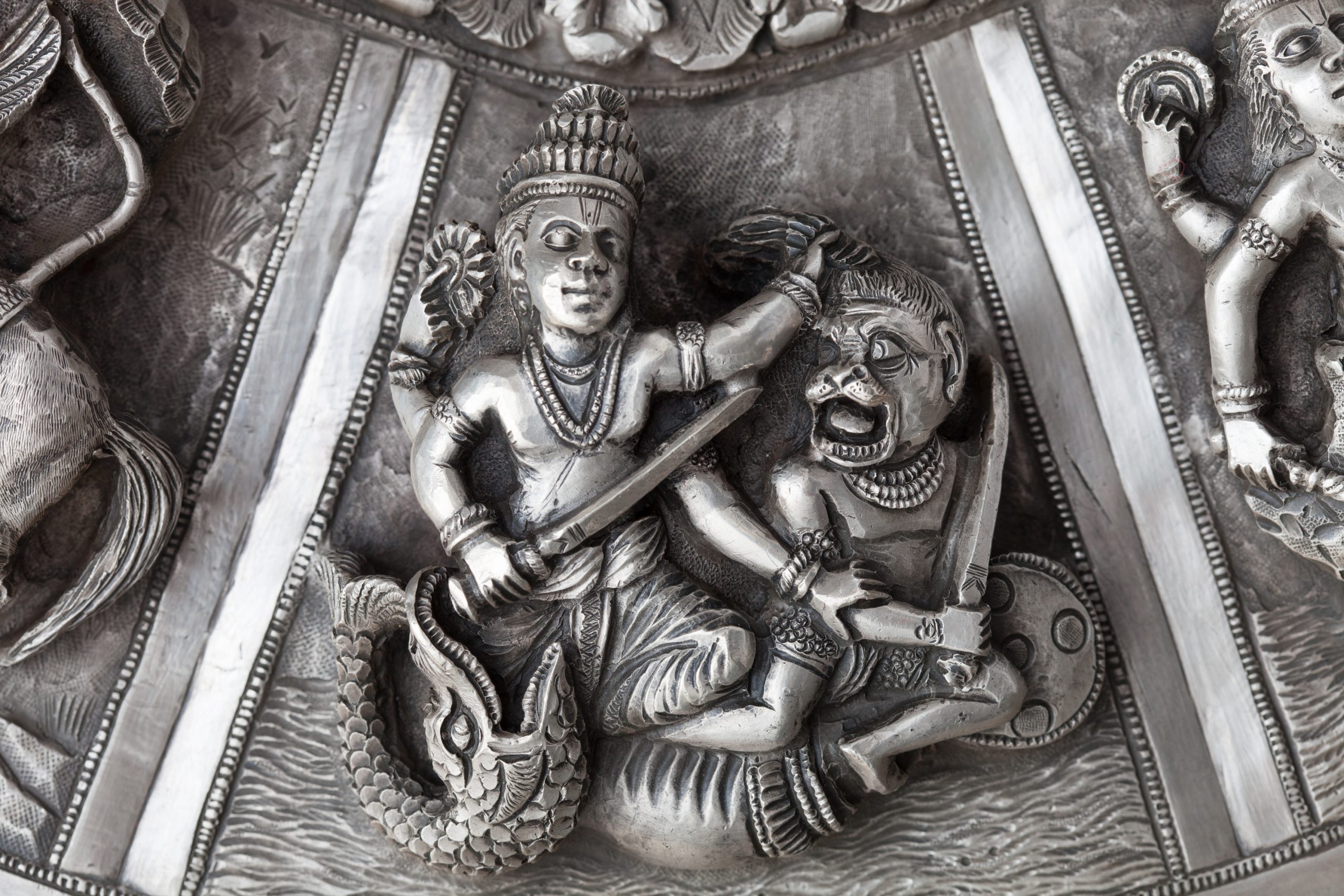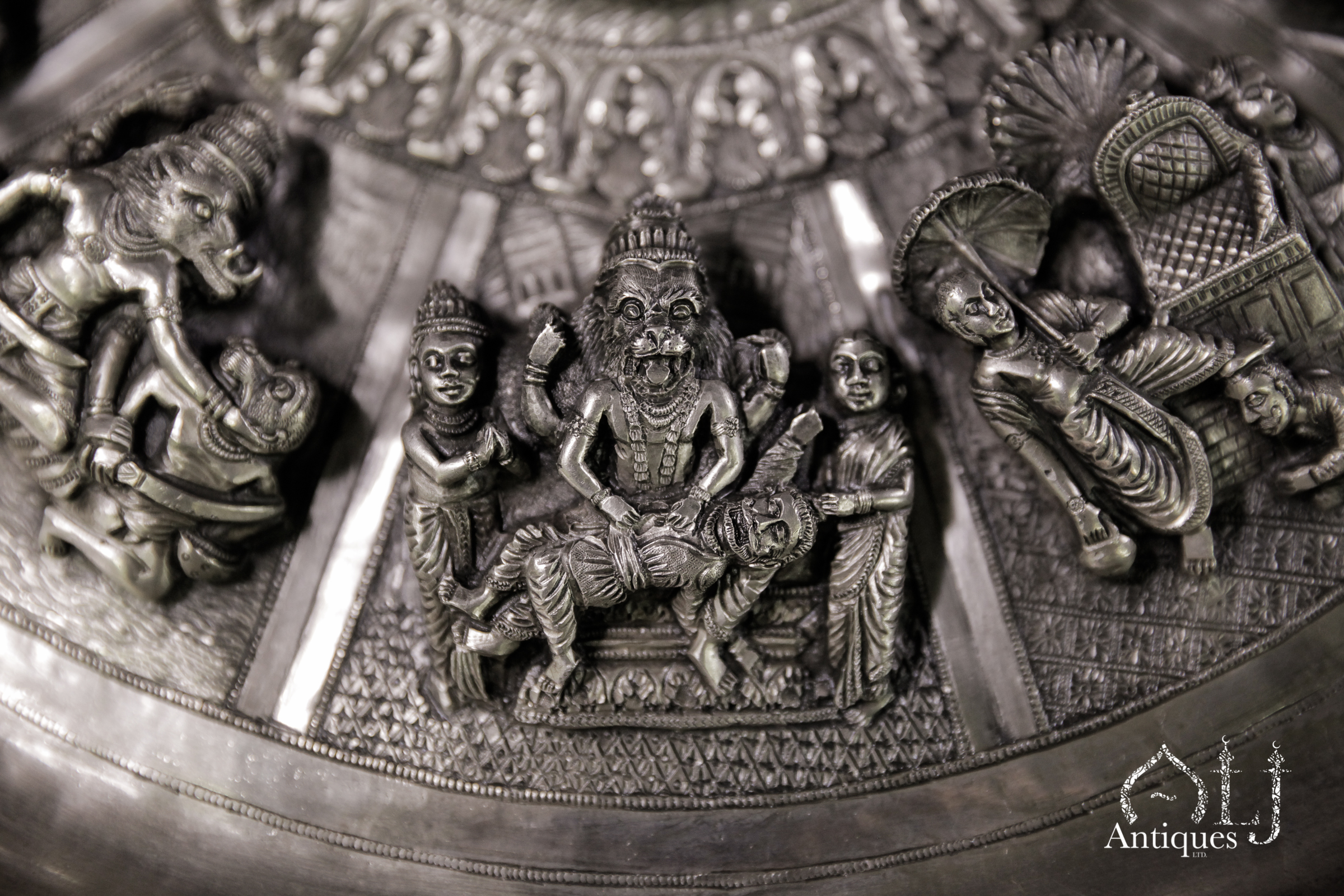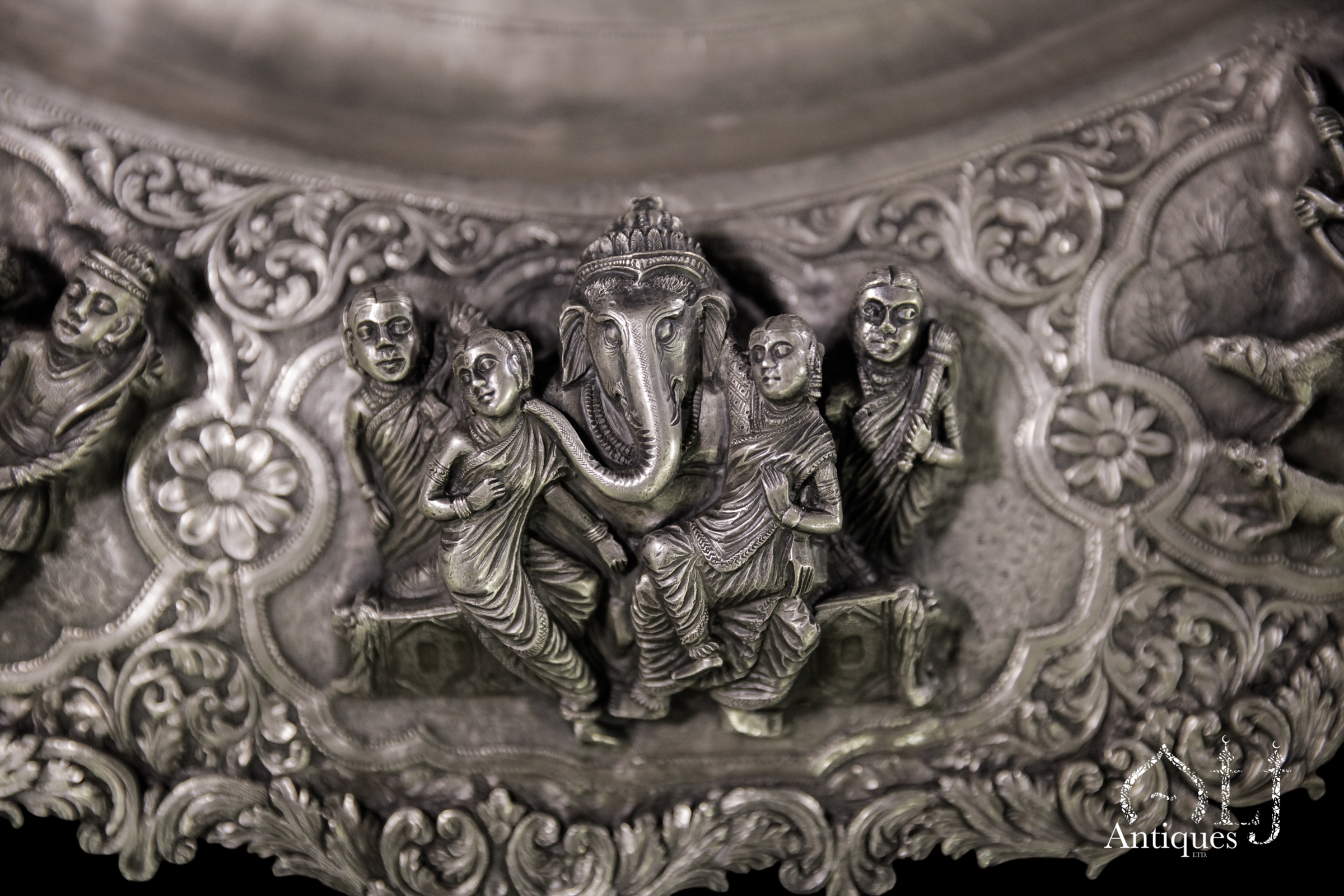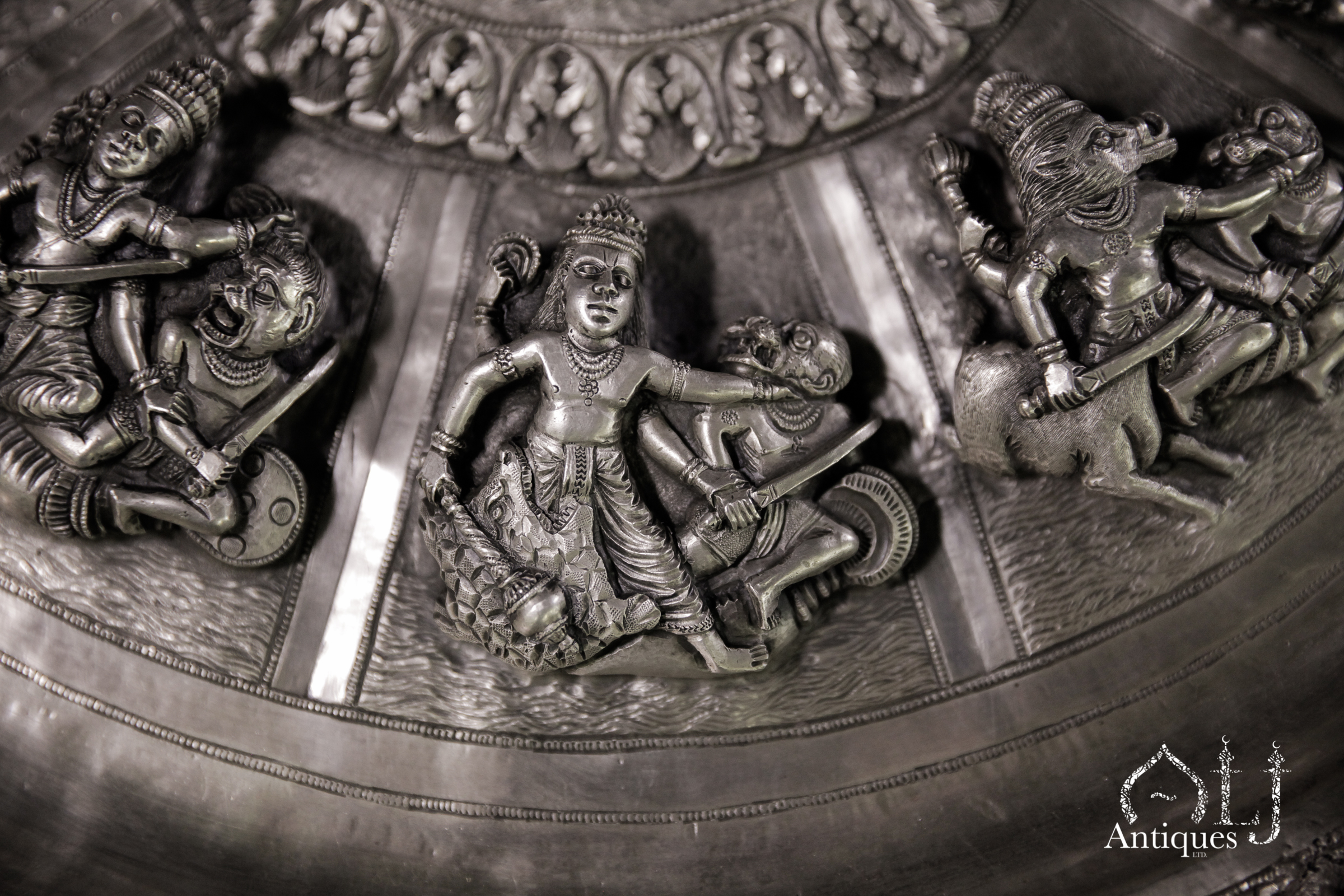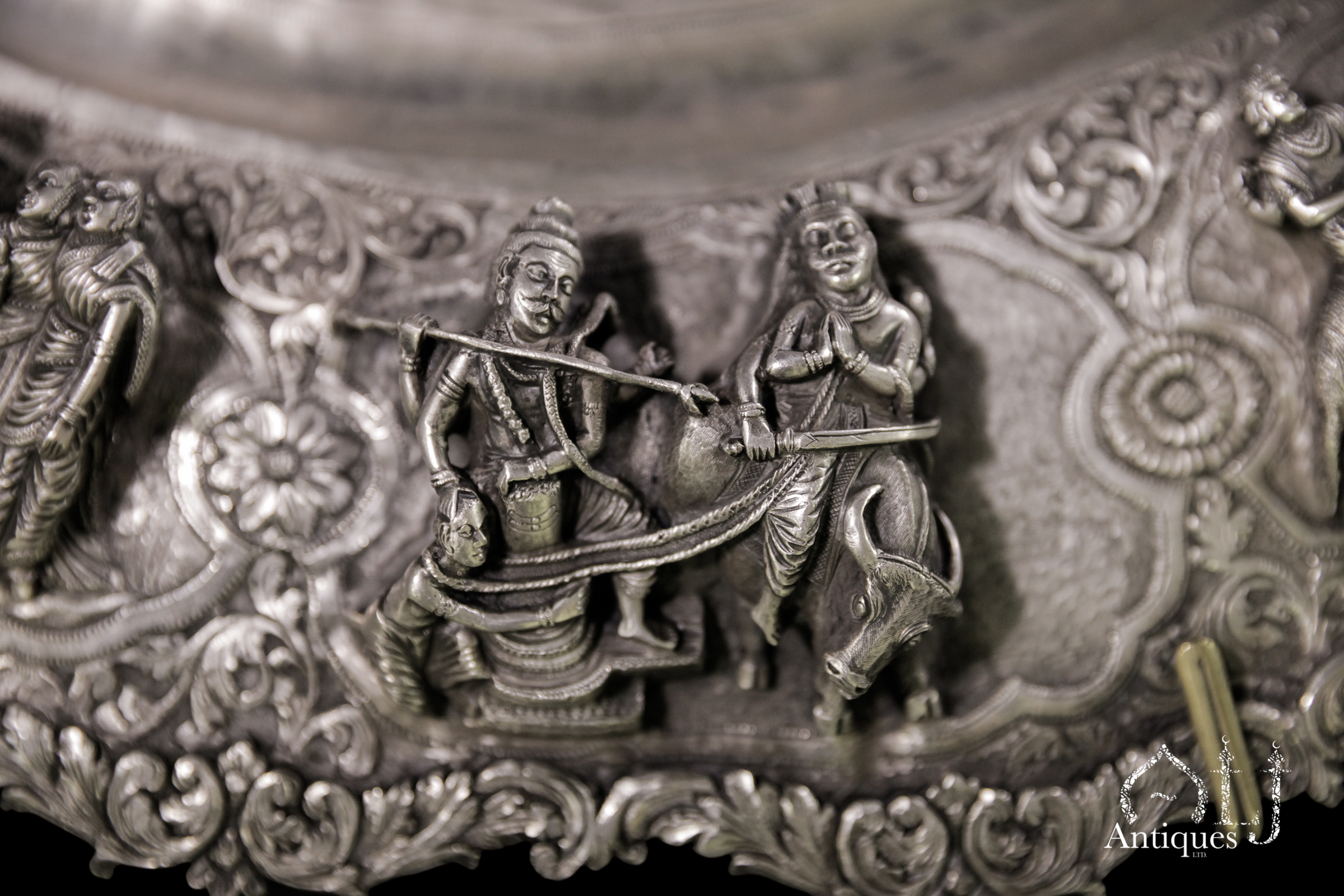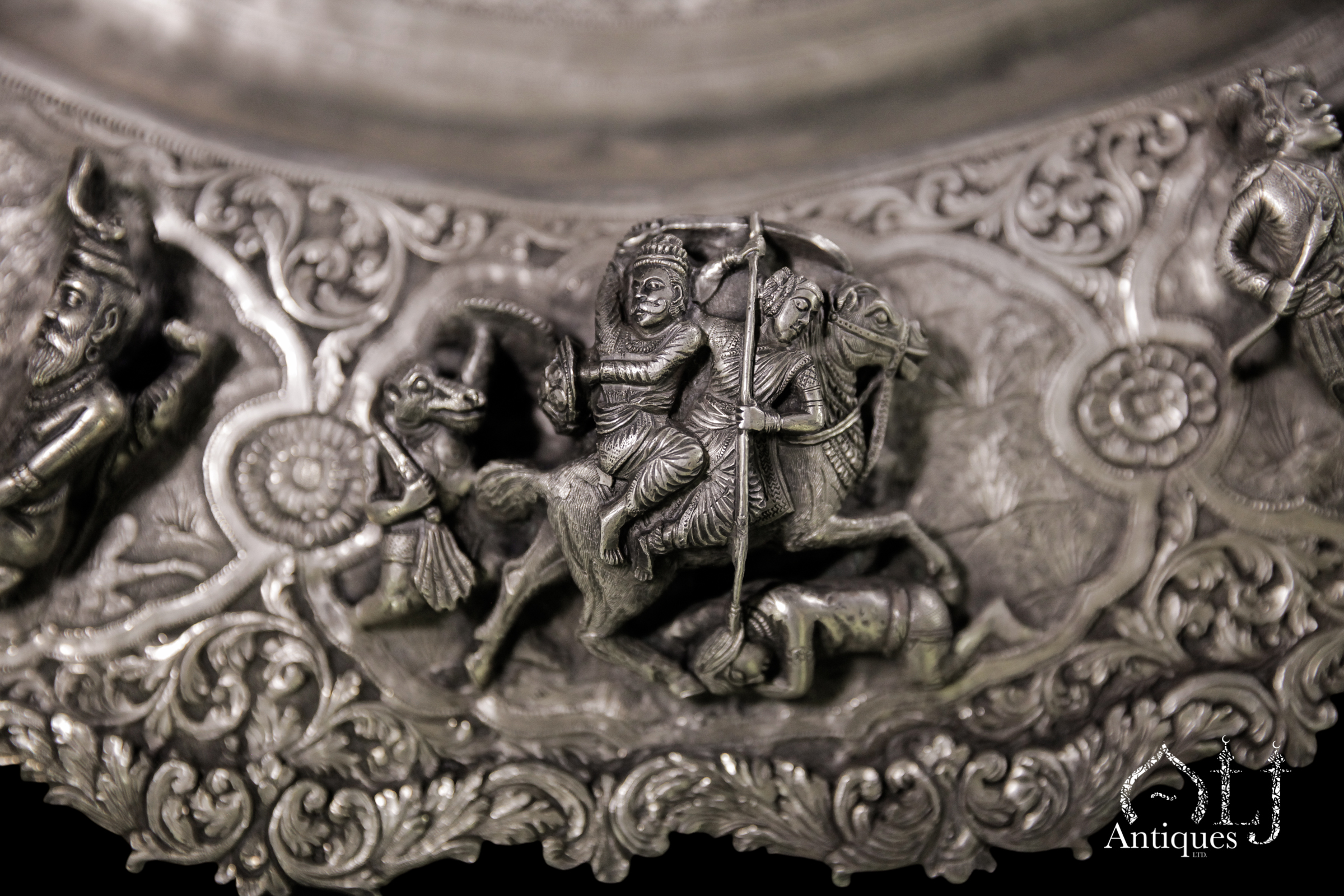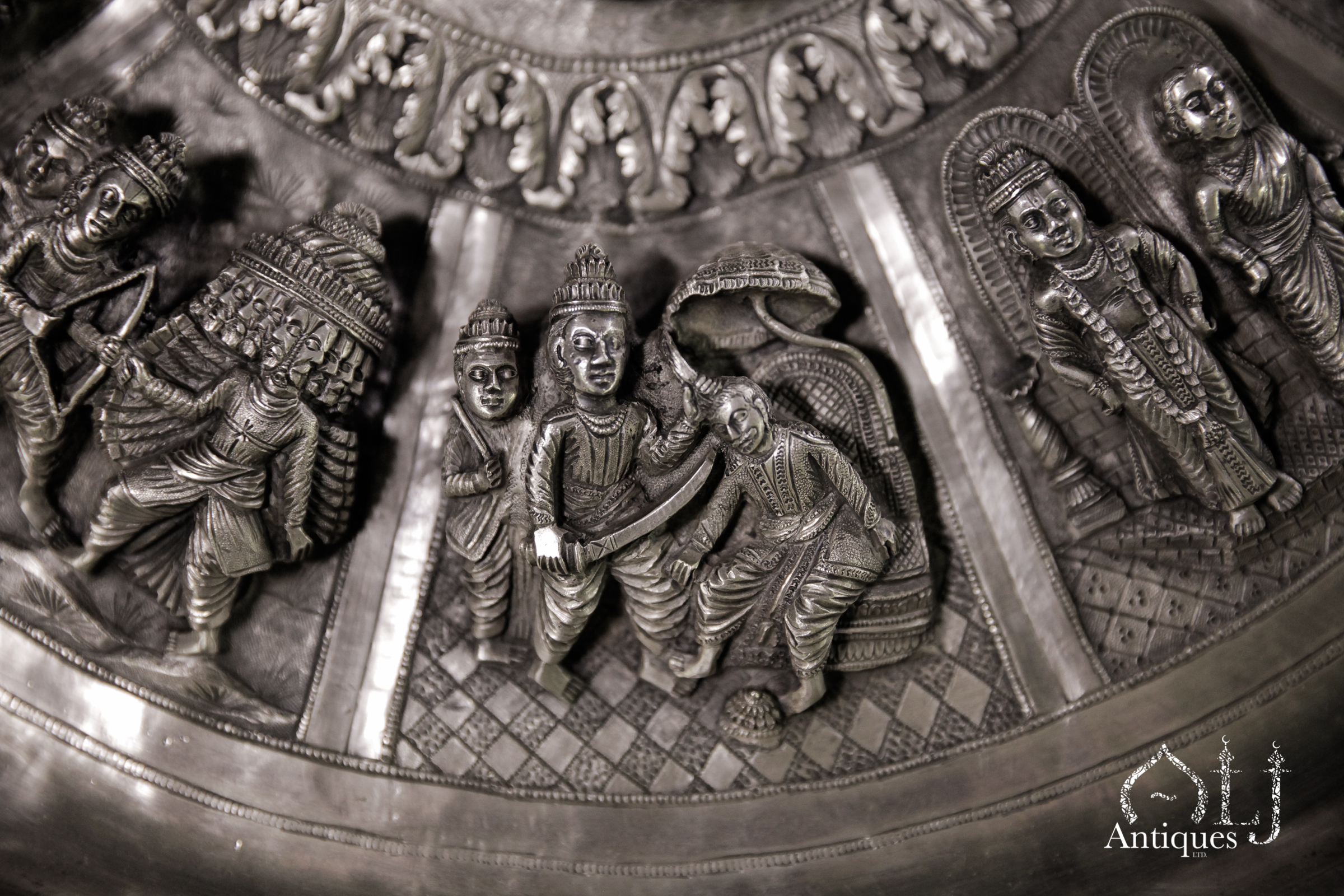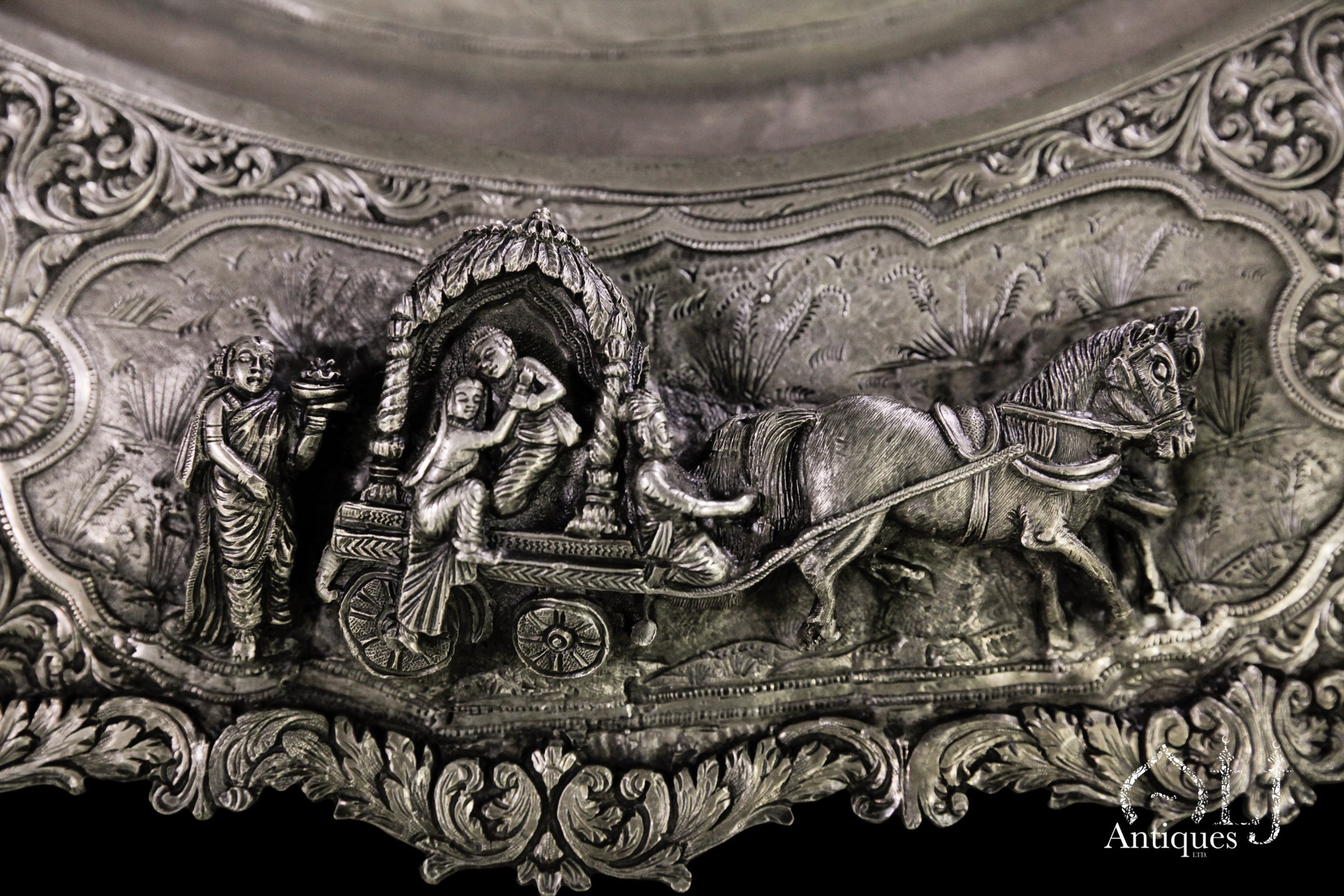Description
This monumental, exceptionally rare and important round silver salver, originating from Poona (Pune) in the mid to late 19th century, stands as a masterwork of Indian repoussé silver craftsmanship deeply rooted in Hindu religious iconography and was commissioned for the indigenous people.
Academic, Artistic Details and Iconographic Significance
At its centre, the salver features Lord Vishnu reclining on the cosmic serpent, with Brahma emerging from a lotus at his navel.
Surrounding them are Lakshmi (Bhumi Devi), Garuda, and other figures from the Vedic pantheon, all rendered in high repoussé.
The charger also includes the Dasavatara (which refers to the principal avatars incarnations of Vishnu, the Hindu God of Preservation or the ten avatars of Vishnu).
Additionally the twelve narrative panels are depicted on the rim of the salver each bordered by floral scrolls and surrounded by a repeating floral pattern in high relief.
Notably, the embossing and engraving on this piece display a deliberate interplay of stylistic traditions, suggesting a sophisticated and informed artistic approach.
Some sections display exceptionally fine and intricate workmanship, while others have a more naïve yet charming quality.
This variation suggests that multiple artisans, each with their own stylistic approach, may have contributed to the piece, adding to its unique character and depth.
Comparative Rarity
To the best of our knowledge, and in consideration of the sheer scale, substantial weight of precious silver, and the complexity and iconographic depth of its decorative programme, the present silver charger represents the second known example of its kind. The only closely comparable monumental silver salver is a related example from Thanjavur, South India, now held in the British Museum, believed to have been commissioned in the early 19th century, as recorded in the exhibition catalogue Mughal Silver Magnificence (XVI–XIX Century), edited by Antalga, 1987 (ISBN: 0-951-8523-1-0).
The same related silver salver is illustrated as Lot 20 on page 48 of the catalogue, where its recorded dimensions measure 60 cm in diameter, whereas the present example is notably larger, measuring 68.3 cm in diameter, further underscoring its exceptional scale and rarity.
The Thanjavur salver likewise depicts scenes from the Ramayana; however, its overall form and stylistic treatment are widely understood to reflect the influence of contemporary British tastes prevalent during the colonial period. By contrast, the present Poona charger demonstrates a markedly different artistic and cultural intent, remaining wholly devoted to indigenous Hindu themes and religious symbolism, entirely unmediated by colonial aesthetic influence.

For reference, the related Thanjavur salver in the British Museum (accession number 1981,0414.1, Brooke Sewell Permanent Fund) provides a colonial-influenced counterpart that further underscores the exceptional cultural and artistic significance of the present Poona example.
Conclusion
The present salver or charger stands as an outstanding example of 19th-century Indian repoussé silver, and as a rare survival of Hindu-inspired sacred silverware. In sum, this extraordinary object constitutes an invaluable work for both academic study and serious collectors, representing a monumental and exceptionally rare survival of 19th-century Hindu silver artistry.
Its monumental proportions, richly layered iconography, and exceptional craftsmanship strongly suggest a temple commission or princely order, conceived to embody both material wealth and devotional significance.

